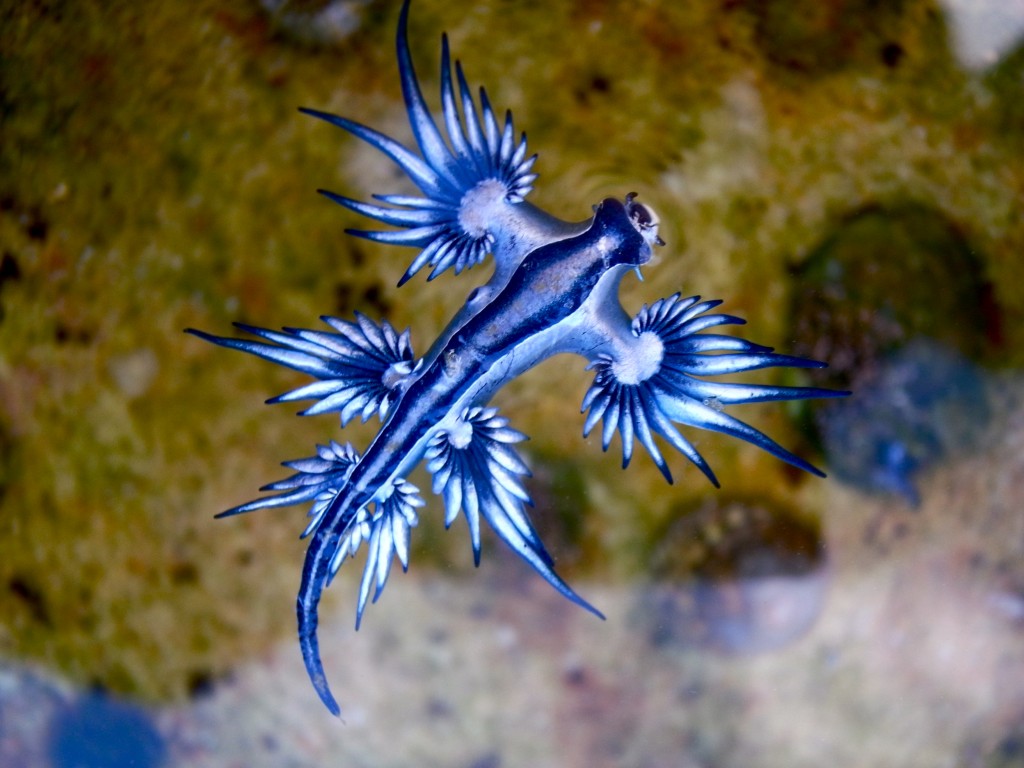
Blue Dragons

21-12-2023
Blue Dragons
|
For Prelims: About the Blue dragons, Diet, Blue Buttons |
Why in the news?
Recently, blue dragons (Glaucus atlanticus) have been spotted on the beach and in waters near the shore in Besant Nagar in Chennai.
About the Blue dragons:
- The blue dragon (Glaucus atlanticus) is a type of mollusc known as a nudibranch.
- They also are known as blue sea slugs, blue angels, and sea swallows.
- It rarely grows larger than three centimetres long.
- An air bubble stored in its stomach keeps the blue dragon afloat.
- Distribution: It can be found drifting on the surface of the Atlantic, Pacific and Indian oceans in temperate and tropical waters.
- The Blue Sea Dragon, a rare deep-sea organism, is known for its unique appearance.
- It is a sea slug, the class of marine organisms that are shell-less mollusks with a wide range of colors and shapes.
- The Blue Sea Dragon, with its ability to camouflage using both blue and silver sides, is a captivating sight, particularly when forming groups known as 'blue fleets.’
Diet:
○They feed on venomous siphonophores such as the Portuguese man-o-war and bluebottle, which also occur in ocean surface waters.
○The dragons appear immune to the nematocysts – stinging cells – of these jellyfish-like creatures.
○They incorporate these cells into multiple finger-like structures protruding from their body which provides them with a potent form of protection from predators.
- The slug isn't venomous all on its own, however, it stores the stinging nematocysts created by the creatures on which it feeds.
- Its sting can cause problems, especially to children and elderly.
- One sting from this little creature can lead to nausea, pain, vomiting, acute allergic contact dermatitis, and post-inflammatory hyperpigmentation.
- They are hermaphrodites, meaning they have both male and female reproductive organs.
Blue Buttons
- Blue Buttons, resembling button-like shapes, are not singular organisms but colonies of small predators called hydroids.
- The Blue Buttons are often confused with jellyfish.
Source:The new Indian Express